Secrets of Successful Sales: Proven Sales Pipeline Generation Strategies (2024)
Introduction: Sales Pipeline Generation Strategy
So, what is sales pipeline generation? Think of it as a roadmap for your sales process. It visually represents potential customers’ journey from initial contact to a closed deal.
But it’s not just a static image – it’s a dynamic tool that helps you manage your sales activities and track your progress. It allows you to see at a glance where each potential buyers are in the sales funnel and what actions you need to take to move them to the next pipeline stages.
And the best part? It assists you in prioritizing your efforts and concentrating on the deals most likely to succeed. By identifying which potential customers are a good fit for your product or service and which ones aren’t, you can save much time and resources on unlikely deals.
So there you have it – a sales pipeline in a nutshell. It’s not as scary as it sounds and can be a powerful tool for growing your sales revenue. In the following sections, I will provide a guide to the pipeline generation process.
Key Takeaways:
What is Pipeline Generation?
Sales pipeline generation refers to creating and managing a structured and organized system for handling potential sales opportunities from initial contact to closing a deal. The sales pipeline visually represents a sales lead’s various stages before becoming a paying customer. This concept is crucial for sales teams and businesses to effectively track and manage their sales process.
Sales pipeline generation helps sales teams prioritize their efforts, identify bottlenecks or areas for improvement, and forecast future revenue based on the opportunities in the pipeline. It provides a structured framework for managing the sales process and ensures that leads are systematically moved through each stage until they either convert into customers or are disqualified.
Customer Relationship Management (CRM) software often facilitates sales pipeline management, which allows sales teams to track and monitor leads, interactions, and deals in a centralized system. This enables better collaboration, data-driven decision-making, and improved overall sales performance. It is also crucial that sales and marketing teams are aligned in their objectives to build a successful pipeline generation.
Pipeline generation is a critical component in ensuring a systematic and efficient strategy for managing future sales prospects and driving business growth.


What tools are required to build and maintain a sales pipeline?
Pipedrive is a powerful suite of tools you can employ to build and maintain a sales pipeline. Pipedrive is a popular customer relationship management software created to help businesses manage their team’s sales process more efficiently. It is particularly well-suited for small to mid-sized businesses looking for a user-friendly and customizable pipeline CRM solution.
One of the key features of Pipedrive is its visual sales pipeline, which allows sales reps to track their deals intuitively. The sales pipeline software is fully customizable, so team members can set it up to match their specific sales process and track the progress of their deals at different stages.
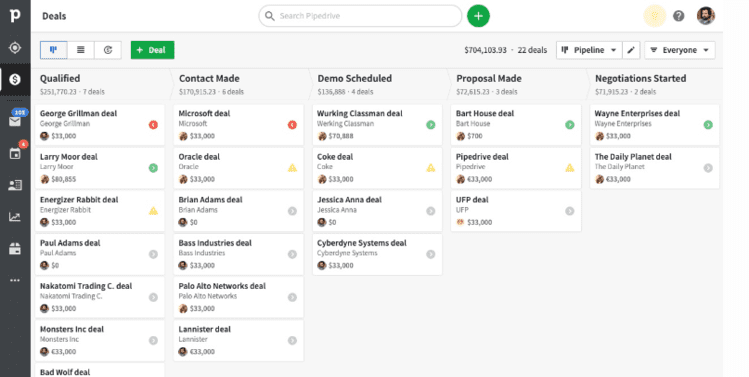

Pipedrive also offers a mobile CRM app for both iOS and Android devices. The Pipedrive Mobile apps allows you to manage your sales pipeline on the go so you can stay productive no matter where you are.
With the Pipedrive Mobile CRM app, you can access your sales pipeline and manage your deals, contacts, and activities directly from your mobile device. You can also receive push notifications for new deals and upcoming meetings, so you never miss an opportunity.
In addition to the pipeline, Pipedrive also offers a range of other useful features, including contact management, email integration, activity tracking, and reporting. Pipedrive integration is a key feature. It integrates with many different business tools, such as Google Apps, Google Sheets, Trello, Slack, and other third-party apps. It makes it easy to incorporate into your existing workflows.


To ensure success, the Sales Department can employ another Pipedrive tool called Project. Project View is a Project Management software designed to help sales teams manage their projects alongside their sales pipeline, providing a comprehensive view of all activities related to a deal or project in one place.
Another great thing about Pipedrive is its ease of use. The clean and intuitive interface makes navigating and finding what you need easy. It offers excellent customer service, including a comprehensive knowledge base, video tutorials, and live chat support.
Overall, Pipedrive is an excellent CRM solution for business owners looking to streamline their sales processes and improve efficiency. Its visual pipeline and customizable features make it easy to track your current deals and stay on top of your sales. In contrast, its ease of use and integrations make it a valuable addition to any sales team’s toolbox.
Pro Tip:
Recognize the importance of time as a valuable asset. Elevate your business by enlisting a highly experienced Pipedrive specialist to set up your Pipedrive CRM. Devote your attention to the strategic elements of your business for optimal growth.
Related Article: “Pipedrive Vs Hubspot CRM Comparison: Which is the Best CRM Tool for You?”
What are the steps in creating a Pipeline?
1. Identifying your target audience:
If you’re going to sell anything – whether it’s a product or a service – you need to know who you’re selling to. That’s where identifying your target audience comes in.
But it’s not enough to know who your potential customers are. You need to understand their needs and pain points, too. What challenges are they facing? What problems are they trying to solve? What goals are they trying to achieve?
By answering these questions, you can develop a deep understanding of your target audience and tailor your sales approach to their specific needs. You can position your product or service as the solution to their problems and demonstrate how it can help them achieve their goals.
And here’s the best part: when you know your target audience inside and out, you can speak their language. You’ll be able to connect with them on a deeper level and build trust and rapport. And when your potential customers feel like you understand them and their needs, they’ll be much more likely to buy from you.
So, take the time to get to know your target audience. Talk to potential clients, survey them, and observe them. Find out what makes them tick. It may take some extra effort, but trust me – it will pay off in the end.


2. Lead generation:
In marketing, lead generation is the initiation of consumer interest or inquiry into the products or services of a business.1 The bread and butter of any successful sales operation. But how do you attract new clients in the first place? That’s where developing a lead generation strategy comes in.
Pipedrive CRM systems can help you develop lead generation. This versatile CRM software has several tools to help you generate leads, including web forms, email integrations, and lead capture automation. Using the chatbot feature, you can track your website visitors and engage with them in real time.
The key is thinking creatively about how to reach your target audience and get their attention. One effective way to do this is through social media. Platforms like Facebook, Twitter, and LinkedIn allow you to target specific demographics and interests, making getting your message in front of the right people easier.
But social media is just one piece of the puzzle. Email marketing is another powerful tool for lead generation. By building a mailing list of potential customers and sending them targeted messages, you can keep your brand top of mind and encourage them to take action.
And let’s not forget about advertising. Whether through Google AdWords, Facebook Ads, or another platform, targeted advertising can be a great way to reach potential customers and drive them to your website or landing page.
The key is to experiment with different tactics and measure your results. Test different ad copy and messaging, track your website traffic and conversion rates, and see what’s working and what’s not. Over time, you’ll be able to refine your lead generation strategy and hone in on the tactics that deliver the best results.
So don’t be afraid to get creative and try new things. With a solid lead generation strategy, you’ll be well on your way to building a strong sales pipeline and growing your business.
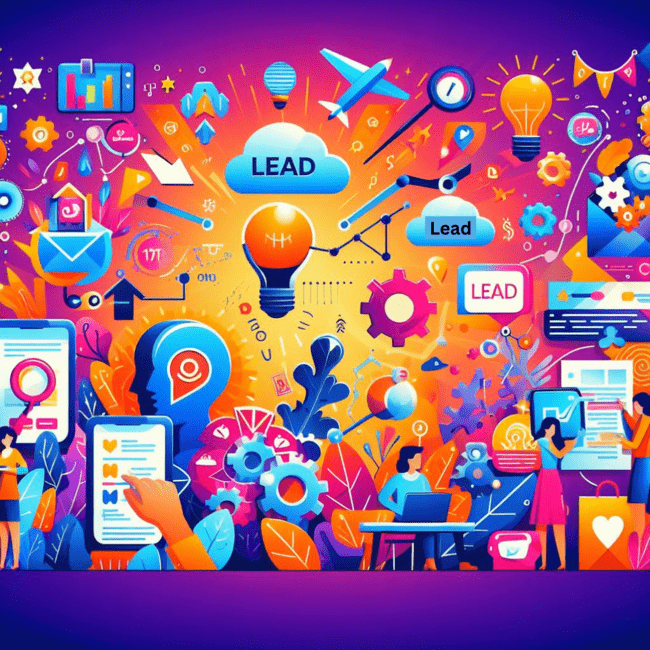

3. Lead Qualification and Lead Nurturing:
So you’ve generated some leads – great! But not all leads are created equal. Some are worth pursuing, while others waste time and resources. That’s where lead qualification comes in.
With Pipedrive, you can set up custom lead scoring criteria to determine which leads are the most promising and should be pursued. You can also use the lead activity feed to track their engagement with your website and emails, giving you valuable insights into their level of interest.
The key is to evaluate each potential customer based on predetermined criteria. It might include a budget, timeline, and fit with your product or service. For example, a potential customer with a tight budget and a long timeline may not be the best fit for your business.
By qualifying leads this way, you can focus your sales and marketing efforts on the deals most likely to close. You can determine at what stage the potential customer is located in the sales pipeline. You can avoid wasting time and resources on unlikely leads and instead put all your energy into the deals with the highest potential for success.
But lead qualification is about more than just saving time and resources. It’s also about building strong relationships with your potential customers. When you take the time to understand their needs and goals and evaluate whether or not your product or service is a good fit, you’re demonstrating that you value their time and are invested in their success. And when you show that level of care and attention, your potential customers are much more likely to view you as a trusted partner and ultimately choose to do business with you.
So, pay attention to the importance of lead qualification. By taking a strategic approach to evaluating potential customers and focusing on the deals that matter most, you’ll be well on your way to building a strong sales pipeline and growing your business. Stop wasting time on the unqualified lead.
Lead Nurturing:
After generating leads, the focus shifts to nurturing those leads. This involves building a relationship by providing relevant content, addressing their needs, and staying engaged with them over time. Lead nurturing aims to keep the brand top-of-mind and gradually move leads closer to making a purchase decision.
By employing lead nurturing strategies, businesses can establish themselves as trusted advisors, providing valuable insights that resonate with the leads’ challenges. Consistent and thoughtful lead nurturing efforts enhance brand loyalty and increase the likelihood of conversion when the leads are ready to make a purchasing decision.
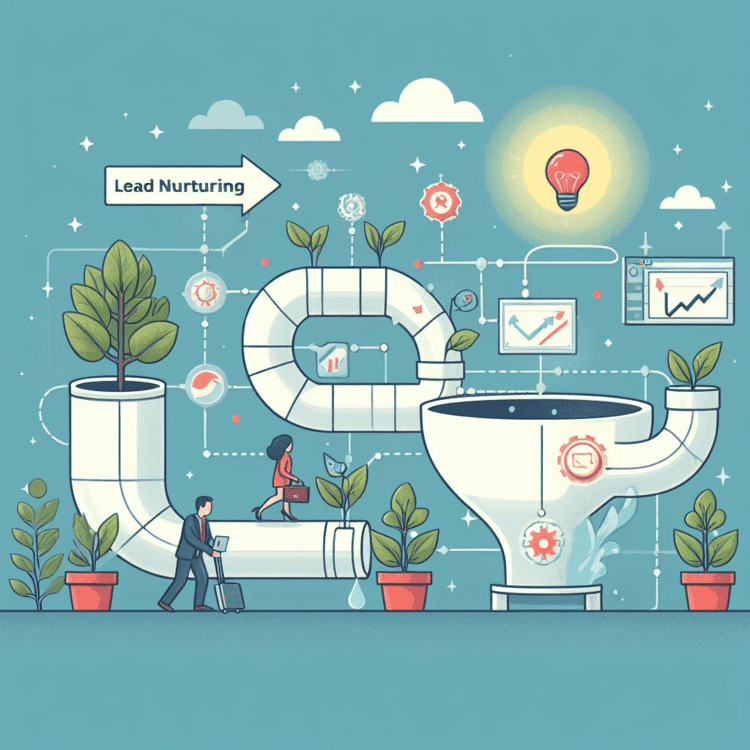

4. Contact leads:
Now that you’ve identified and qualified your leads, reaching out and building relationships is time. It means initiating conversations and learning more about their needs and how you can help.
Pipedrive allows you to send a personalized cold email and track your communication with leads directly within the platform. Pipedrive users can also utilize the calling feature to make and record calls, keeping your communication history in one place.
But let’s be clear: contacting leads is not about cold calling or bombarding them with unsolicited messages. It’s about engaging in a genuine conversation and showing that you’re invested in their success. Whether through email, phone, or social media, the key is connecting and building rapport.
One effective approach is to ask open-ended questions and listen carefully to their answers. It allows you to understand their needs and goals more deeply and tailor your messaging and strategy accordingly. You can also use this opportunity to educate them about your product or service and demonstrate how it can help solve their specific challenges or pain points.
But remember to keep the conversation two-way. Ask potential customers about their experience with similar products or services and how they’ve addressed their needs in the past. It not only helps build trust and rapport but can also provide valuable insights into their decision-making process.
Contacting leads is about building relationships and establishing yourself as a trusted partner. By taking a thoughtful and genuine approach, you’ll be well on your way to converting qualified leads into loyal customers and building a strong sales pipeline.
So feel free to make phone calls, email, or reach out on social media. You’ll be one step closer to meeting your sales targets and expanding your business if you take the time to connect with potential customers.
5. Set up a meeting:
You’ve successfully engaged a qualified lead, and they’re interested in learning more about your product or service. The next phase is to set up a meeting to discuss their needs and demonstrate how you can help.
Pipedrive’s scheduling feature allows you to book meetings and send reminders to you and your leads. You can also use the built-in video conferencing feature to hold virtual meetings directly within the platform.
But let’s be clear: this is not a sales pitch. It’s an opportunity to have a genuine conversation and understand their unique challenges and goals. It means actively listening to their needs, asking thoughtful questions, and tailoring your approach to their situation.
When setting up the meeting, make sure to be respectful of their time and schedule. Be clear about the purpose of the meeting, the agenda, and the expected outcomes. It allows both parties to come prepared and make the most of the meeting.
During the meeting, be prepared to demonstrate your product or service and provide concrete examples of how it can help address their specific challenges. It could include case studies, customer testimonials, or a live demo. But remember, the focus should be on the potential customer’s needs and how you can help solve them, not on selling your product or service.
By setting up a meeting and taking a consultative approach, you’ll be well on your way to building a strong relationship with your potential customer. And who knows? It could be the beginning of a long and mutually beneficial partnership.
Grab the opportunity, reach out, and arrange a meeting. You’ll be one step closer to meeting your sales targets and expanding your business if you take a thoughtful and genuine approach.


6. Propose a solution:
When proposing a solution, it’s important to remember that you’re not just selling a product or service but also providing a solution to a problem. It means highlighting the specific benefits and outcomes that the customer can expect to achieve rather than simply listing features and capabilities.
Make sure to tailor your solution to the specific needs and challenges of the customer. It shows that you’ve listened to their concerns and are invested in their success. It also helps differentiate your solution from the competition and positions you as a trusted advisor.
Be clear and transparent about your solution’s costs, timeline, and expected outcomes. It helps manage expectations and builds trust and credibility with the customer. And remember to address any potential objections or concerns and provide compelling reasons why your solution best fits their needs.
Ultimately, proposing a solution is about showing the customer that you understand their unique challenges and have a clear path to solving them. By taking a consultative approach and positioning yourself as a trusted advisor, you’ll be well on your way to closing the deal and building a strong relationship with your customer.
Pipedrive CRM allows you to easily create and send customized proposals and quotes to your leads. You can also track their engagement with these documents and receive notifications when they are opened.
Go ahead and propose a solution that meets the customer’s needs. By taking a thoughtful and genuine approach, you’ll be one step closer to achieving your sales goals and growing your business.
7. Negotiate and close deals:
Negotiating and closing a deal can be a delicate process, but it’s an essential part of the sales process. It’s important to remember that you and the customer want to come to a mutually beneficial agreement that works for both parties.
Pipedrive’s deal stage tracking feature allows you to easily see where each deal stands in the sales process and take action to move it forward. You can also use the revenue forecasting feature to understand your sales pipeline’s potential revenue better.
When negotiating terms, be transparent and clear about what you’re offering and what the customer can expect. It includes the cost, timeline, and desired outcomes of your solution. Be prepared to address any objections or concerns the customer may have and provide compelling reasons why your solution best fits their needs.
But remember, negotiations should never be confrontational. Instead, they should be collaborative and focused on finding a win-win solution. It means actively listening to the customer’s concerns and finding ways to address them while meeting your goals.
It’s time to close the deal once the terms have been agreed upon. It can be done through various methods, such as a contract or verbal agreement. Make sure to clearly outline the terms of the agreement and provide any necessary documentation to the customer.
But don’t stop there. Follow up with the customer to ensure they’re satisfied with the solution and address any concerns. It helps build trust and credibility with the customer and lays the foundation for long and mutually beneficial customer relationships.
Don’t be afraid to negotiate and close the deal with the customer. By taking a collaborative and solution-focused approach, you’ll be one step closer to achieving your sales goals and growing your business.


8. Follow-up:
The sales process continues after closing the deal. Following up after the sale is critical to ensure your business’s success and cultivate a long-term relationship with the customer.
Pipedrive’s email and activity tracking features make it easy to follow up with customers after the sale and identify other deals or upselling opportunities.
Following up with the customer helps ensure their satisfaction with the solution and provides opportunities for additional sales. By staying in touch with the customer and keeping them informed about new products or services that may be of interest, you can continue to build trust and credibility with them and position your business as a trusted partner in their success.
But following up is about more than just trying to make more sales. It’s also an opportunity to show that you value the customer’s business and care about their success. It means actively seeking out feedback and addressing any concerns they may have, even if it means admitting mistakes and taking steps to make things right.
Following up can take many forms, such as a thank you note, phone call, or email. The important thing is to keep the lines of communication open and be proactive in addressing any issues that arise.
So pay attention to the importance of following up with the customer after the sale. By staying engaged and showing a genuine interest in their success, you can increase the likelihood of repeat business and cultivate a loyal and satisfied customer base that will help your business thrive in the long run.
Close more deals with Pipedrive’s CRM Platform.
Do you need help keeping track of your sales pipeline and managing your leads effectively? Pipedrive is here to help! Their easy-to-use CRM platform is designed specifically for sales teams and provides all the tools to streamline your sales process and close more deals.
With Pipedrive, you can easily track your leads, schedule meetings, and send personalized proposals and quotes. Its robust platform also includes powerful automation features, such as lead capture and email tracking, to help you save time and focus on the most promising leads. With Pipedrive sales CRM’s comprehensive reporting and forecasting tools, you’ll always know where you stand regarding revenue and sales performance.
Pipedrive is the perfect solution for small and mid-sized businesses that want to take their sales process to the next level.
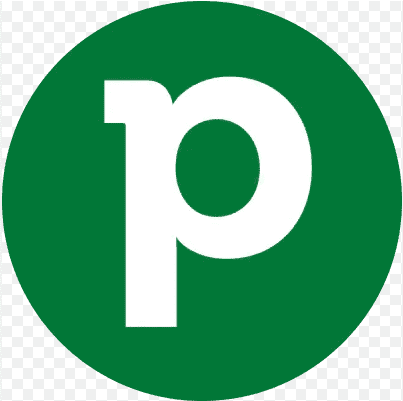

Pipedrive
Pipedrive is the perfect option for simplified and effective sales processes. Unleash the power of simple automation to save time and focus on what matters most: closing deals and growing your business. Improve your sales game, increase efficiency, and understand firsthand why Pipedrive is the preferred platform by businesses looking to succeed in today’s competitive market.
Final Thoughts:
Sales pipeline generation is a critical part of any successful sales strategy. It involves identifying your target audience, generating leads, qualifying leads, contacting leads, setting up a meeting, proposing a solution, negotiating and closing the deal, and following up with the customer. Each step in the process is important and requires careful planning and execution.
To build an effective sales pipeline, you must first understand your target audience and their needs and a well-defined sales process tailored to their specific needs and pain points. By taking a customer-centric approach, you can create a sales pipeline that is both efficient and effective in achieving your sales goals.
But constructing a sales pipeline is just the beginning. To succeed in sales, staying engaged with the customer throughout the entire process, from lead generation to follow-up after the sale, is important. It means actively seeking out feedback, addressing any concerns they may have, and building a long-term relationship based on trust and credibility.
In conclusion, sales pipeline generation is an ongoing process that requires careful planning, execution, and follow-up. By taking a customer-centric approach and staying engaged with the customer throughout the entire process, you can build a loyal and satisfied customer base that will help your business thrive in the long run.
Frequently Asked Questions
What is Pipeline Generation?
Pipeline Generation is the systematic process of creating and managing a sequence of stages that potential sales opportunities move through, from initial contact to deal closure.
What does it mean to create a pipeline?
Creating a pipeline involves defining and organizing the stages of a sales process, allowing businesses to track and manage potential sales opportunities in a structured manner.
What is the difference between Lead Generation and Pipeline Generation?
Pipeline Generation involves the entire sales process, from lead identification to deal closure, while Lead Generation specifically focuses on attracting and identifying potential customers.
What does Pipeline mean in business?
In business, a pipeline refers to a structured and visual representation of the various stages a potential sale progresses through, providing a clear sales process overview.
What is lead generation?
Lead Generation is identifying and attracting potential customers (leads) who have shown interest in a product or service to convert them into paying customers.
What is pipeline strategy?
Pipeline Strategy refers to the plan and tactics employed to effectively manage and optimize the sales pipeline, ensuring a steady flow of potential opportunities and maximizing conversion rates.
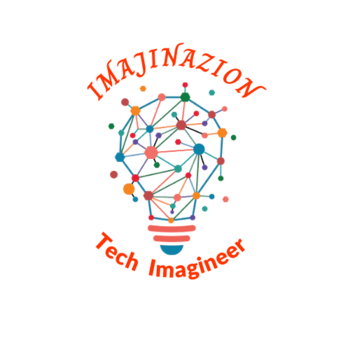






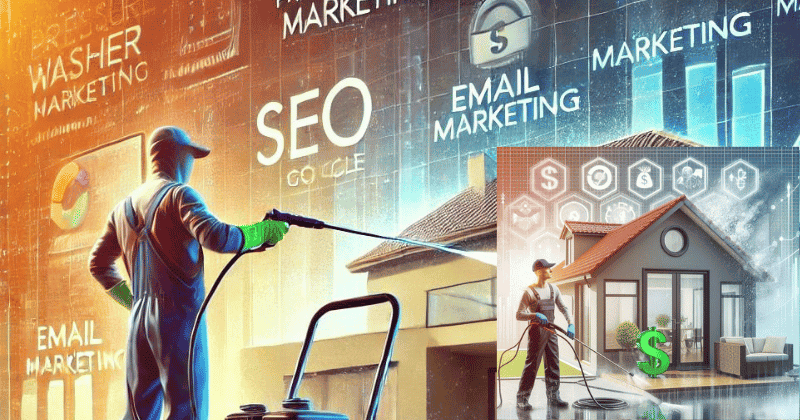


One Comment